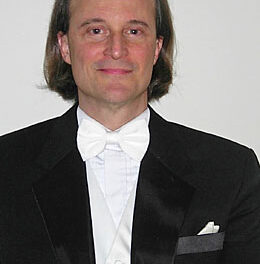James Lecesne‘s 2015 play, The Absolute Brightness of Leonard Pelkey, now in a current production by Honest Pint Theatre Company, concerns a distinctly different 14-year-old boy in a small town on the Jersey shore. Leonard’s fashion choices (Capri pants and self-made platform sneakers), his intimate knowledge of cosmetics (helping women at the beauty salon bring out their inner beauty), and his unbridled, beaming flamboyance have made his family, friends, and schoolmates uncomfortable. But his self-confident otherness and ability to see good in everyone also have intrigued them.
When Leonard is reported missing, a police detective begins an investigation. After Leonard is found drowned in a lake, tied down with weights, the detective deems his death a murder case. During investigative questioning, those who had interacted with Leonard reflect on how he has affected their lives.
Lecesne based the 70-minute one-act on his well-received 2008 young adult novel, Absolute Brightness, in which Leonard is a character. The play is a one-man show told from the perspective of the detective, Chuck DeSantis. Eight other characters are also acted out, from teenagers to senior citizens, male and female. Lecesne, also a noted actor, performed his piece to great acclaim in New York City and a handful of other U.S. cities.
On opening night, Honest Pint’s founder and co-artistic director, David Henderson, added to his considerable collection of highly praised performances with this challenging role. His tough-talking detective, complete with Jersey accent, could instantly turn into Ellen, the fortyish beauty salon owner who had been caring for Leonard after he was abandoned by her brother. Henderson’s embodiment of Ellen’s take-no-prisoners personality brought the first of many rounds of laughter, including for the effete Britisher, Buddy, who teaches the theatre classes Leonard was taking. Henderson impressed with his ability to make the audience see multiple characters in the same room, such as when Ellen is joined by her shy daughter, Phoebe, and Chuck’s bumbling assistant, Marty.
Despite the abundance of humor in the piece, Henderson again proved a master of poignant characterizations with Otto, an elderly German watch repair shop owner who befriended Leonard, and Marion, a raspy-voiced chain-smoker who has realized that Leonard’s assessment of her stalled life was insightfully accurate. Henderson ably differentiated each character, from teenager Travis, distractedly rapt in his video game, to wizened retiree Gloria, slow-moving but still clear-minded. In several instances, Henderson edged toward caricature for laughs rather than finding the humor within a character, but his full commitment to each one made such quibbles negligible.
Lecesne deserves credit for promoting the idea that you should feel free to be yourself and that differences among people should be accepted rather than feared. His novel allowed this to come through with depth and subtlety, but his stage version is less satisfying. Leonard’s death as a hate crime seems deemphasized for an upbeat, feel-good message about his positive effect on everyone’s life. The amount of humor in the script seems at odds with its chilling central event. And crafting the piece for a single actor turns it into a display of acting chops rather than what’s best for the story. This is especially noticeable when some characters’ lines are weighted with more detail than necessary for the points being made. Still, the play has important things to say and is entertainingly presented here.
Director Susannah Hough has guided Henderson around the stage precisely, making full use Jen Leiner’s pleasing set. The House Beautiful room (a den with comfy chair and lamp, large desk, and twin bookcases filled with decorator items) at first seems at odds with the implied police station location. The large blank wall between the bookcases is used for Will Mikes’ projections of pieces of evidence, animated drawings, and photos. Only when the wall becomes a picture window does the room makes sense via Chuck’s wrap-up of what eventually happened to him and the other characters. Anthony Buckner’s lighting and sound design help set the atmosphere and mood of the various scenes, as do Shanna Burns’ props.
The play’s various faults don’t keep it from making an impact. Audiences should be drawn in by its timely themes and by Henderson’s laudable transformations into its multiple characters.
The Absolute Brightness of Leonard Pelkey continues through Saturday, April 21. For more details on this production, please view the sidebar.












